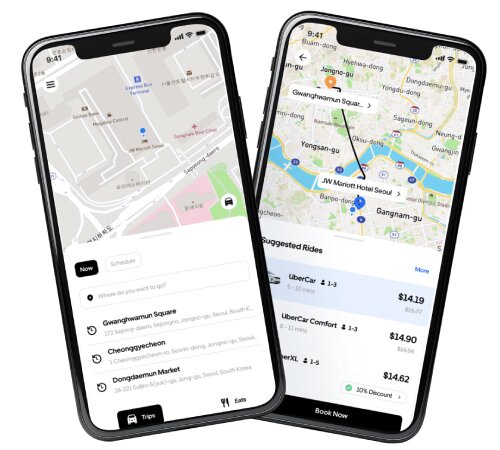In today’s digital age, on-call for services have revolutionized various industries. One such industry is transportation, with Uber leading the pack. Developing an Uber clone app calls for a deep knowledge of its vital concepts. This guide will delve into the fundamental factors and intricacies related to growing a hit Uber-like utility.
Understanding the Market Demand
Before diving into app development, it’s important to check out the marketplace calls for on-demand transportation services. Research shows that demand for convenient, reliable transportation solutions is increasing, especially in urban areas with busy lives. Understanding this requirement lays the foundation for developing a successful Uber clone app.
Identifying Target Audience
To successfully meet the needs of your target market, it is important to discover and understand their demographics, prospects, and pain factors. Conduct market studies to gather valuable information about the preferences of potential users. This data will help you tailor your app to meet their unique wants and expectations.
Analyzing Competitors
In a competitive market, it is important to read competitors to gain a competitive share. Study existing Uber-like apps to understand their strengths, weaknesses, and exact selling points. This analysis will help you identify gaps and differentiation opportunities within the market, ensuring that your app stands out from the competition.
Choosing the Right Development Approach
When it comes to developing an Uber clone app, deciding on the right development technique is paramount. You can choose native app development, cross-platform improvements, or perhaps remember to use an app improvement platform. Each approach has its own advantages and disadvantages, so it is important to evaluate them carefully based on your challenge needs and finances.
Designing User-friendly Interface
The success of any app depends on its user interface (UI) and user experience (UX). Designing a consumer-pleasing interface that is intuitive and easy to navigate is key to engaging customers and keeping them coming back. Focus on simplicity, clarity, and consistency in layout to ensure a seamless user experience.
Implementing Key Features
The success of the Uber clone app depends on its capabilities and functionality. Key capabilities to keep in mind include real-time tracking, stable fee gateways, driver and rider profiles, score and evaluation structures, and in-app messaging. It is essential to implement these features correctly to provide a smooth and convenient experience to the user.
Ensuring security and privacy
Security and privacy are paramount when developing any app, especially one that provides sensitive information and financial transactions to consumers. Implement robust security features to protect consumer data, secure payment transactions, and protect against cyber threats. Compliance with information security rules is also important to ensure proper acceptance by users.
Testing and Quality Assurance
Before launching your Uber clone app, thorough testing and good guarantees are important to ensure its functionality, overall performance, and reliability. Perform extensive testing on a variety of devices, architectures, and network conditions to be aware of and address any bugs or issues. User comments and beta testing can also provide valuable insights for similar refinements.
Launching and Marketing Strategy
A successful app launch requires a properly planned marketing method to generate buzz and generate interest in your target market. Utilize digital advertising channels including social media, email advertising and marketing, influencer partnerships, and App Shop Optimization (ASO) to effectively reach your target market. Constantly reveal and check overall performance metrics to optimize your advertising efforts and push for consumer acquisition.
Scaling and Future Development
Once your Uber clone app goes live, ongoing protection, updates, and continuous improvements are important to remain aggressive and meet user desires. Monitor consumer comments, market trends, and technological advancements to detect opportunities for scaling and future improvements. Regularly update your app with new capabilities and improvements to keep users engaged and happy.
FAQs (Frequently Asked Questions)
- How long does it take to expand the Uber clone app?
The repair time frame for the Uber clone app varies depending on various factors including complexity, function, and repair technique. Typically, it can take anywhere from 3 to six months to develop a fully useful app. - What are the key features of the Uber clone app?
The main functions of the Uber clone app include real-time monitoring, a secure charging gateway, driver and rider profiles, score and review structures, in-app messaging, and experience scheduling. - How can I ensure the security of my Uber clone app?
To ensure the security of your Uber clone app, implement strong security features like encryption, stable authentication mechanisms, general security audits, and compliance with fact security policies. - What advertising techniques can I use to promote my Uber clone app?
You can use a variety of virtual marketing techniques like social media advertising, email advertising, influencer partnerships, App Shop Optimization (ASO), and paid advertising to sell your Uber clone app and successfully reach your target audience. - How can I scale my Uber clone app for fortune growth?
To scale your Uber clone app for future growth, recognition on non-stop development, general updates, and improvements based on consumer comments, market trends, and technological improvements. Invest in advertising and user acquisition techniques to grow your user base and reach new markets. - What are the difficult conditions of developing an Uber clone app?
Some of the challenging situations in developing an Uber clone app include conflicting existing apps, ensuring regulatory compliance, maintaining security and privacy, optimizing overall performance across different devices and structures, and keeping up with rising user expectations and enterprise trends.
Conclusion
The development timeline for an Uber clone app varies relying on different factors such as complexity, features, and improvement methods. In common, it may take everywhere from 3 to six months to broaden a completely useful app.


Pingback : How UK App Developers are Shaping the Future of Educational Technology